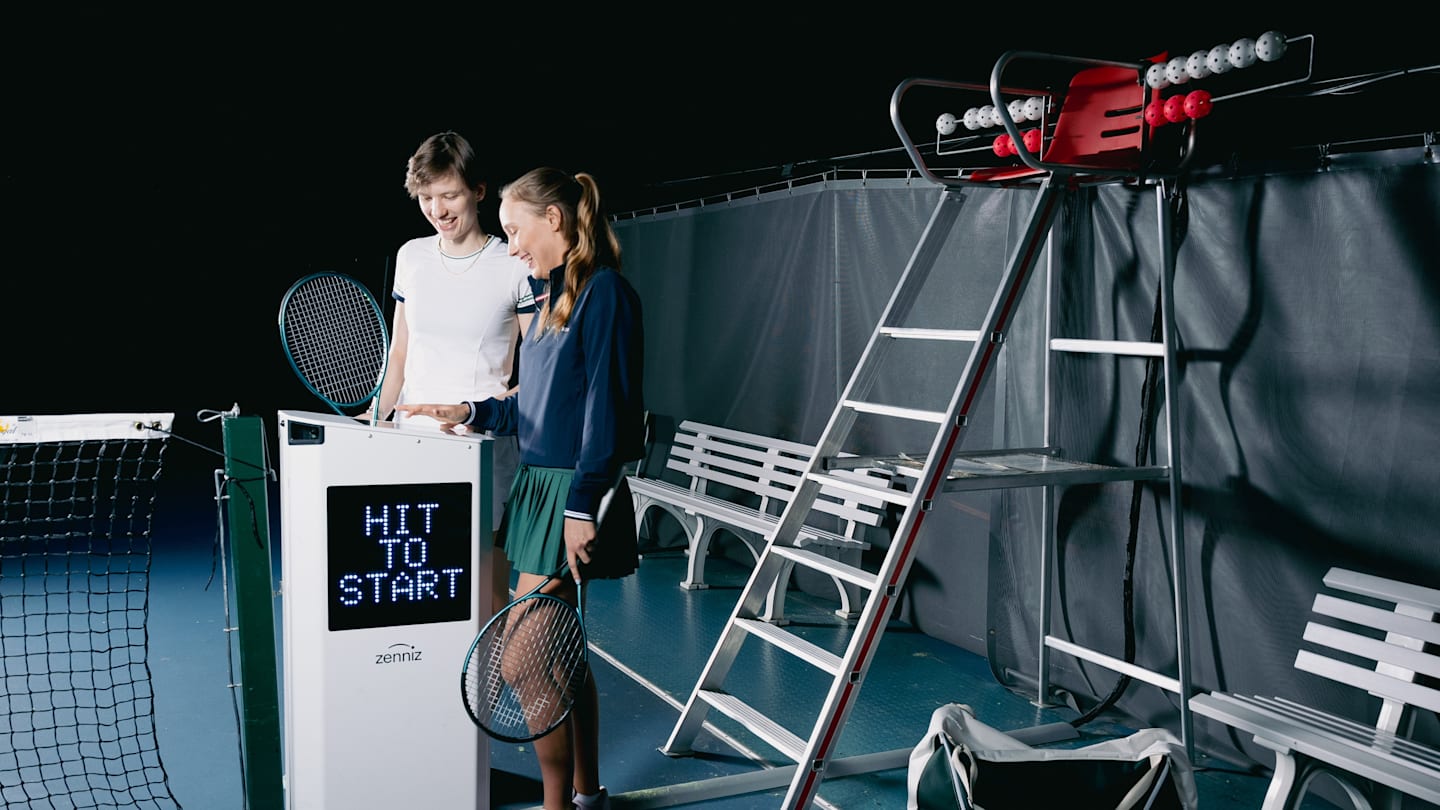Tennis Warehouse, one of the world’s largest online tennis retailers, partnered with Swedish technology company Zenniz to introduce AI-based smart-court analytics into its racket and string testing process.
With this partnership, Tennis Warehouse (Tennis-Warehouse.com) becomes the first major tennis retailer to use objective performance data in its reviews and product pages.
A team of six testers from Tennis Warehouse will run on-court drills to generate objective performance metrics such as serve speed and ball placement percentages with the new smart-court system. The resulting data will be incorporated into the retailer’s YouTube reviews, Instagram content, and product detail pages to help inform consumers about their gear purchases.
“We try to humanize the data and make it something you can take home with,” Zenniz CEO Eero Kuusi said in an interview with Sports Illustrated’s Serve On SI.
“In a sense, there’s no inherent value in just having data and having the stats. The value comes from the stories and from the insights and how whoever you are, whether you are 10-year-old kids or an Alcaraz or a Sabalenka, you can enjoy and get more interesting insights that you don’t [get] if you’re just not having any of that additional information.”
The smart-court analytics technology quantifies what players feel on court, calculating everything from depth and spin to control and power. Zenniz designed a system that produces accurate line calls, full match stats, and comprehensive shot analytics in one complete package.
Zenniz is already in use at Yale University, JTCC in College Park, Grand Rapids Racket & Fitness, and Mouratoglou Academy in Nice, France, supporting both indoor and outdoor tennis courts and practices.
“We are kind of charting new territory in this,” Kuusi said. “When it comes to younger players, there’s never been much data in terms of what the serve speeds, what the base hand, forehand, backhand speeds are. Being able to provide these benchmarks and kind of see that projection and see the development, that’s going to be kind of like a game changer.”
Kuusi, who has a Masters of Science in biomedical engineering from Aalto University in Finland, recognized a gap in technology usage in racket sports. When he played tennis, he was frustrated with the lack of a way to compare his previous matches and statistically track his development.
The smart technology quantifies everything on court from depth and spin to control and power. / Courtesy of Zenniz
Zenniz was born from his desire to combine data technology and tennis to give players instant feedback on their quality of tennis to help them improve their level of play.
Now, smart-court analytics provides benchmarks for players’ serve, forehand, and backhand speeds to allow them to see their projection over their years of training. For Kuusi, the new tech bridges the gap between physical training and numerical projection, ushering in a new era of tennis training.
“Kids nowadays, they’re growing up in a world where it’s surrounded by apps with digital experiences,” Kuusi said. “It’s completely different when we were growing up compared to what’s going on now. I think just to make sports attractive to the younger generations, you need to keep up with that. You need to be able to provide that added layer that they’re used to with everything else.”
Zenniz introduces AI-driven smart-court analytics into its racket and string testing process. / Courtesy of Zenniz
For Tennis Warehouse, the addition of Zenniz data brings an opportunity for more consistent testing protocols, deeper storytelling for product launches, and a set benchmark for accuracy in gear claims across the industry. Customers can use the data to compare rackets, shoes, and other tennis apparel when deciding on which gear will best suit their needs, no matter their level of play.
“Every player deserves the same quality of service from our point of view,” Kuusi said. “You can overwhelm people easily with that data, so you need to figure out how to present all of that in a super intuitive way. We essentially try to build layers so that it’s very easy to get some insights and enjoy the data. We provide additional layers if you want to dive deeper.”
Stay locked into Sports Illustrated’s Serve On SI for all of your tennis news from the court and beyond.

